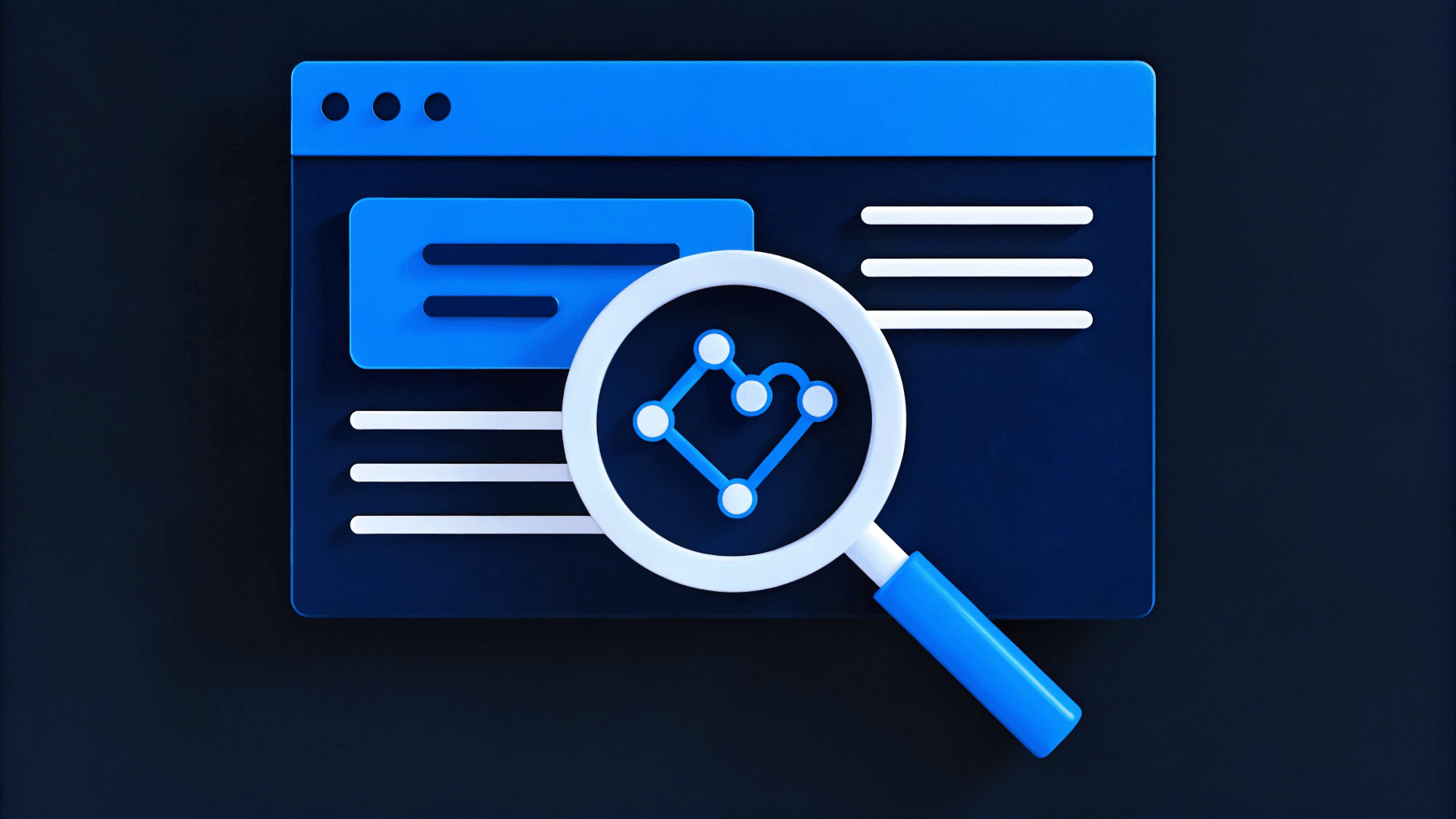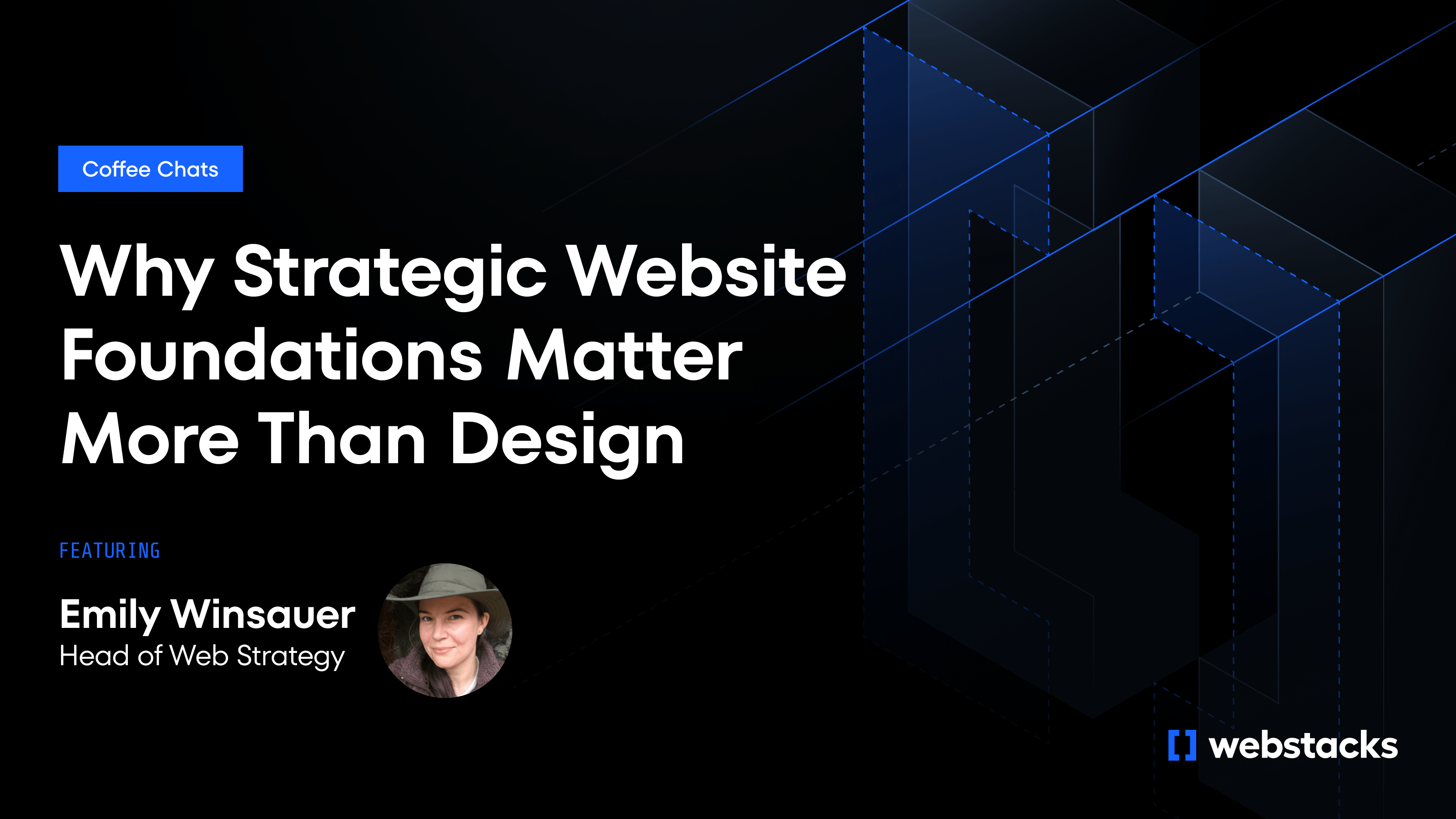The global SaaS market has grown past $428 billion, and every new visitor judges your credibility in seconds. For marketing teams at seed-stage B2B SaaS startups, your website isn't a vanity project—it's conversion infrastructure that must guide prospects through their buyer journey, capture qualified leads, and support your sales team without overwhelming your engineering resources.
This framework maps six essential pages to your conversion funnel stages: attraction, evaluation, validation, and growth. Each page serves a specific function in moving prospects from awareness to trial signup, while universal design principles ensure your site performs consistently across all touchpoints.

Universal Design Principles for All Pages
Before diving into individual pages, establish these foundational elements across your entire site. These principles ensure consistent performance and user experience, regardless of which page a prospect lands on first. Think of them as your site's operating system—they should work seamlessly in the background while each page fulfills its specific conversion role:
- Performance Standards — Target sub-3-second load times. Slow pages increase bounce rates by 32% and directly impact conversion rates. Use lightweight images, modern frameworks, and CDN delivery.
- Modular Architecture — Build with reusable components that allow quick testing and iteration. Marketing teams should be able to swap headlines, update pricing, or add testimonials without engineering tickets.
- Consistent Trust Signals — Maintain uniform social proof elements (customer logos, security badges, testimonials) across all pages to reinforce credibility throughout the buyer journey.
- Clear Navigation — Ensure visitors can easily move between evaluation stages. Every page should offer logical next steps toward conversion.
A Homepage Optimized for Conversion
Your homepage captures initial interest and channels visitors into your evaluation funnel. Marketing teams should optimize for two primary outcomes: immediate trial signups from ready-to-buy prospects and deeper engagement from earlier-stage visitors.
Above-the-Fold Framework
Start with a value proposition that passes the "stranger test"—someone unfamiliar with your space should understand your core benefit within 7 seconds. Use this formula: "We help [specific persona] achieve [specific outcome] by [unique approach]."
Example: "We help SaaS marketing teams convert 40% more trial signups by automatically personalizing website experiences for each visitor segment."
Conversion Flow Architecture
Structure your homepage as a decision tree, not a brochure. After your hero section, guide visitors through:
- Problem identification (pain point your audience faces)
- Solution preview (your unique approach)
- Proof points (key capabilities that make this possible)
- Conversion opportunities (primary and secondary CTAs)
CTA Strategy
Place your primary conversion action ("Start free trial" or "Book demo") above the fold and repeat it every 2-3 scroll sections. Use secondary CTAs ("See pricing," "View case studies") to capture visitors who need more information before converting.
Social Proof Integration
Add customer logos immediately below your hero section. Include one quantified testimonial focused on results: "Increased qualified leads by 73% in 90 days" carries more weight than generic praise.
2. Product Pages That Sell Outcomes
Your product page determines whether prospects see your software as the solution or just another option. Marketing teams should structure this page to address the core question: "How exactly will this solve my problem?"
Feature-to-Outcome Mapping
Transform every capability into a results-focused narrative using this structure:
- Feature: What the functionality does
- Benefit: How it improves their process
- Outcome: The measurable result they achieve
Example: "Automated lead scoring (feature) eliminates manual qualification (benefit) so your sales team focuses on deals 3x more likely to close (outcome)."
Visual Proof Strategy
Replace feature lists with proof. Use annotated screenshots, 30-second demo videos, or interactive elements that let prospects experience value before committing. Show the interface they'll actually use, not polished marketing graphics.
Conversion Bridging
End each major section with a soft CTA that moves prospects deeper into evaluation: "See how this works in practice" (linking to case studies) or "Calculate your potential ROI" (linking to pricing).
3. A Pricing Page That Removes Friction
Your pricing page should accelerate decision-making by answering prospects' top questions instantly. Marketing teams should optimize for trial conversion while providing enough information to qualify leads properly.
Pricing Transparency Framework
Display clear tiers with visible pricing and feature breakdowns. Use plain language that ties to business outcomes: "500 qualified leads per month" instead of "Lead identification quota: 500 units."
Decision Architecture
Limit options to three plans maximum. Highlight your primary go-to-market tier using visual emphasis (borders, badges, or different styling). This guides prospects toward your preferred conversion path while still offering flexibility.
Objection Handling
Add an inline FAQ section addressing common hesitations: contract terms, implementation timeline, data security, and usage overages. This keeps prospects on the page instead of bouncing to support or scheduling unnecessary discovery calls.
Trust Signal Integration
Include relevant certifications (SOC 2, GDPR) and one testimonial focused on ROI or time savings. Technical buyers need assurance that your platform meets their security and compliance requirements.

4. A Social Proof Page That Builds Confidence
Prospects visit your social proof page when they're seriously considering your solution but need reassurance that others have succeeded. Marketing teams should structure this page to address specific concerns while showcasing quantifiable results.
Customer Evidence Hierarchy
Start with recognizable logo grids that demonstrate market traction. Below each logo, add concrete metrics: "Reduced churn by 15%" or "Increased MRR by $50K in 6 months." Quantified results feel more credible than generic endorsements.
Story Structure for Case Studies
When you have detailed customer stories, follow this proven format:
- Challenge: Specific problem the customer faced
- Solution: How your platform addressed it
- Results: Measurable outcomes with timeframes
Example: "AcmeCorp's marketing team struggled with lead qualification, spending 20 hours weekly on manual scoring. After implementing our automated lead scoring, they reduced qualification time by 80% and increased sales-qualified leads by 45% within 90 days."
Conversion Optimization
Add "Talk to sales" CTAs after each case study. Prospects who read detailed success stories are high-intent and ready for sales conversations.
5. An About Page That Establishes Credibility
Your About page serves prospects who need to understand the people and mission behind your product. Marketing teams should focus on building confidence in their ability to deliver results, not just telling their company story.
Founder Credibility
Lead with the problem you're solving and why you're uniquely positioned to solve it. Focus on relevant expertise, not personal backgrounds. If you're building sales automation, highlight your founders' enterprise sales experience, not their college achievements.
Mission-to-Outcome Connection
Connect your company mission directly to customer outcomes. Instead of "We believe in democratizing data," try "We're eliminating the 40-hour weeks data teams spend on manual reporting so they can focus on insights that drive growth."
Team Positioning
Include photos and brief bios of key team members, emphasizing skills that matter to prospects. If you have recognizable investors or advisors, add their logos near team bios to boost credibility.
Soft Conversion Strategy
End with gentle engagement opportunities: newsletter signup, open roles, or upcoming events. This extends the relationship without pushing hard sales.
6. A Resource Center That Captures and Nurtures Leads
Your resource center generates organic traffic and nurtures prospects through educational content. Marketing teams should structure this hub to capture leads at different buyer journey stages while building domain authority.
Content Journey Mapping
Align your content strategy with how prospects naturally research and evaluate solutions. Different buyer journey stages require different content depths and calls-to-action. Map your articles to these stages to ensure you're capturing and nurturing leads at every point in their decision process
- Awareness: "What is" guides and industry trend reports
- Consideration: Comparison guides and best practice frameworks
- Decision: Implementation guides and ROI calculators
Lead Capture Strategy
Keep most content open to maximize SEO value, but gate premium assets like templates, checklists, or technical white papers. Use progressive profiling—start with email-only forms, then gather additional information on return visits.
Content-to-Conversion Bridge
Include relevant CTAs within articles that connect to your main conversion funnel. A guide about lead scoring should link to your product page. A comparison post should reference your pricing page.
Implementation Roadmap for Marketing Teams
Rolling out these changes systematically prevents overwhelming your team while ensuring each optimization builds on the previous one. This 8-week roadmap prioritizes high-impact pages first, allowing you to see conversion improvements early while maintaining momentum through the full implementation.
- Week 1-2: Audit existing pages against this framework. Identify gaps and prioritize based on traffic volume and conversion impact.
- Week 3-4: Implement homepage and pricing page improvements. These typically drive the highest conversion lift.
- Week 5-6: Optimize product and social proof pages. Focus on visual proof and quantified outcomes.
- Week 7-8: Refresh About page and begin content planning for resource center.
- Ongoing: Test messaging variations, gather customer feedback, and iterate based on conversion data.
Measuring Success
Track these metrics to gauge framework effectiveness. Focus on leading indicators that show whether your pages are moving prospects through the conversion funnel, not just vanity metrics like total traffic. Establish baseline measurements before implementing changes so you can quantify the impact of your optimization efforts.
Conversion Metrics
These metrics reveal how effectively your pages turn visitors into qualified prospects. Track these monthly to identify which traffic sources deliver the best conversion rates and where prospects drop off in your funnel.
- Trial signup rate by traffic source
- Time from first visit to conversion
- Page-to-page progression through your funnel
Engagement Metrics
These indicators show whether your content resonates with prospects and keeps them engaged long enough to evaluate your solution. Higher engagement typically correlates with better conversion rates.
- Session duration on key pages
- Bounce rate by page type
- Resource center lead generation
Quality Metrics
These measurements determine whether your website attracts the right prospects who become paying customers. Focus on these to ensure your conversion optimization efforts drive revenue, not just traffic.
- Trial-to-paid conversion rate
- Sales-qualified lead percentage
- Customer acquisition cost by channel
Building for Scale
As your startup grows, this framework evolves with your needs. The modular approach means you can A/B test messaging, add new social proof, or expand product explanations without rebuilding entire pages.
Focus on creating conversion infrastructure that supports your sales team while giving marketing the flexibility to optimize based on data. When your website works as an integrated system rather than isolated pages, every visitor interaction moves prospects closer to becoming customers.
Your seed-stage website should be your most productive sales team member—working 24/7 to qualify leads, address objections, and convert prospects into trials. Book a call with our team and build a website that turns more of your traffic into pipeline and revenue.




